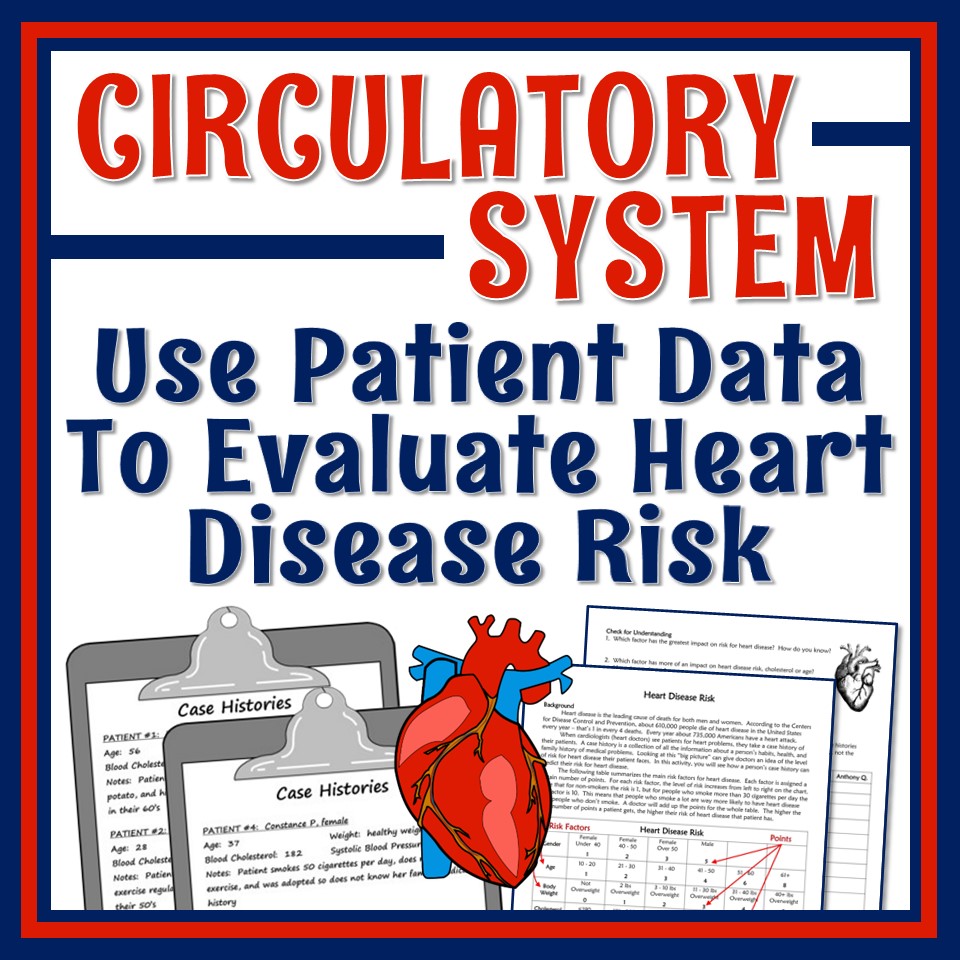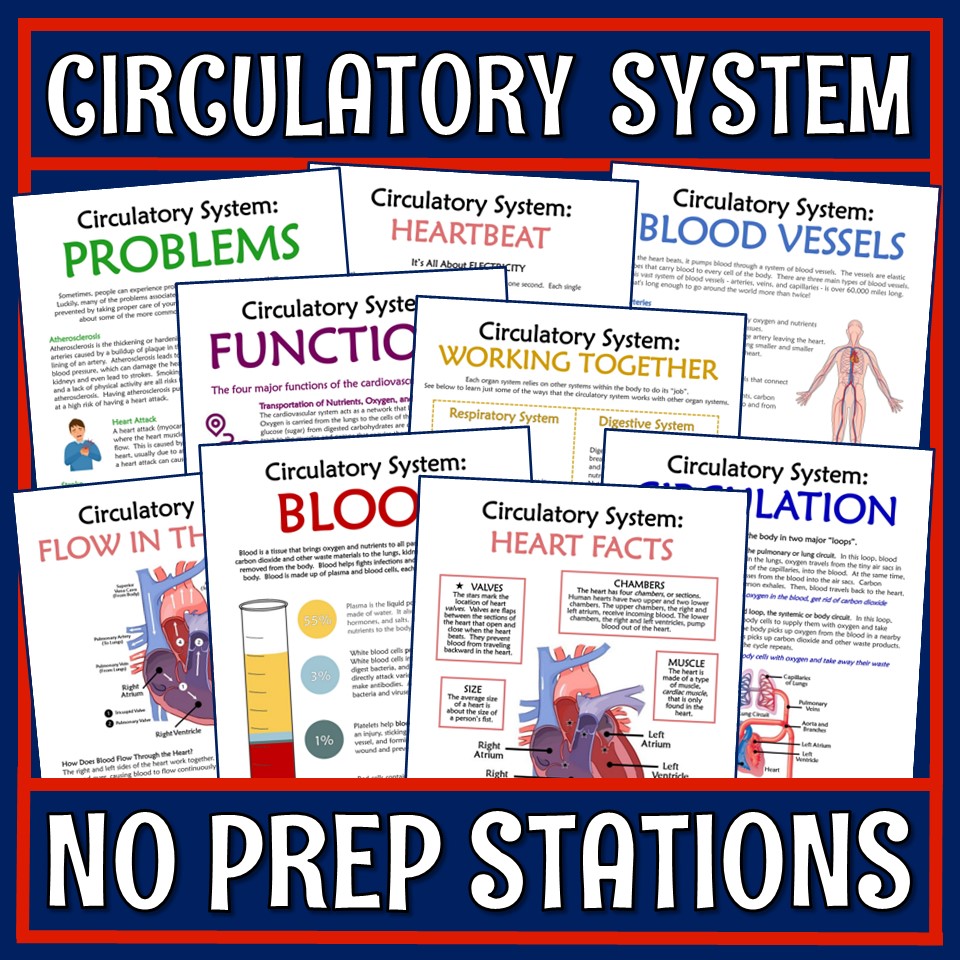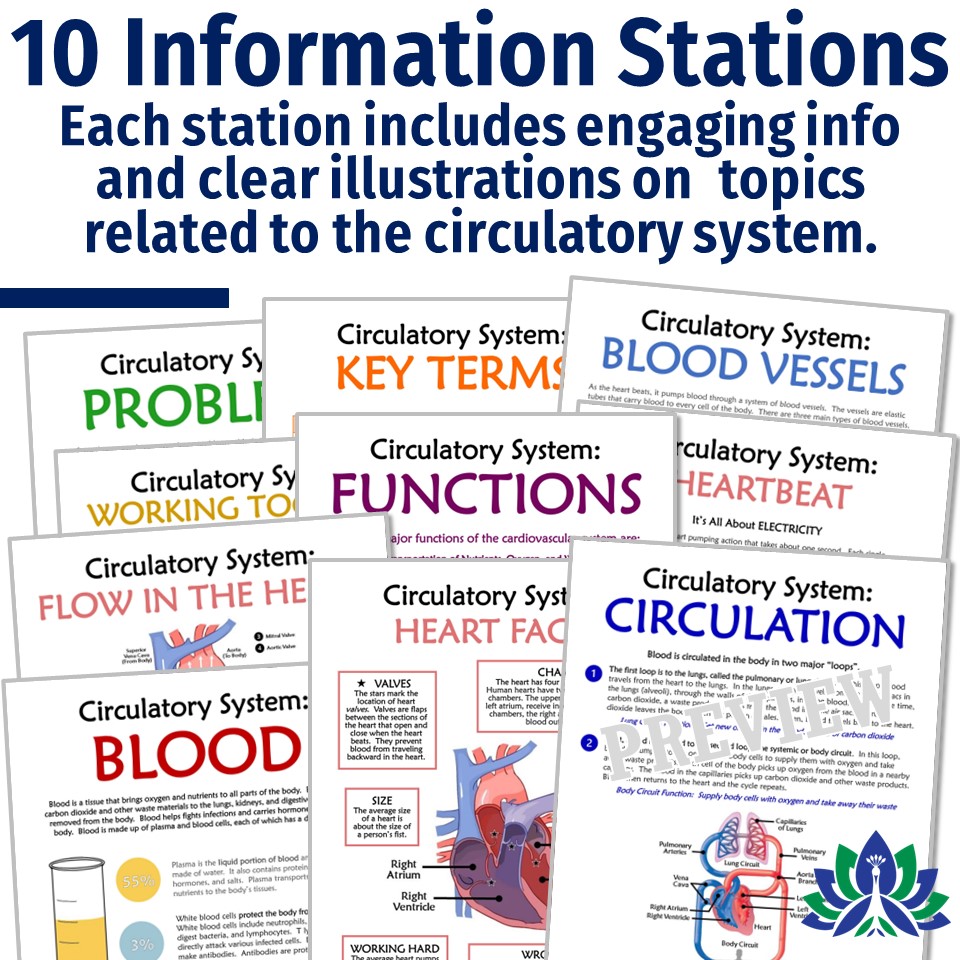
Circulatory System Activities
Looking for some fun and fresh circulatory system activities? I’ve got you!
And how does NO PREP and NO SUPPLIES sound?!?
Introductory Webquest
To get my students warmed up with the circulatory system, I start out with a circulatory system webquest activity. I like to do webquests at the start of units because they provide a good preview of what kids will learn. Plus, observing how quickly complete the webquest, answering their questions, and looking at their answers is a great way to gauge prior knowledge

You can download the Circulatory System WebQuest I use in my classroom for FREE HERE!
Information Stations
Instead of giving notes on the circulatory system, a more engaging way to get information to the kids is with Circulatory System Information Stations.
Stations are always a great way to get students up, moving, and out of their seats. I like to do what I call “information stations” because they’re great for heterogeneous mixes of kids (AKA when you have all different levels of learners in one class). Station activities get all kids involved but are easy to differentiate. Simply pick and choose more basic stations for struggling learners.
My information station activities all circulate (pun intended) around the same topic – in this case, the circulatory system. However, every station has a different type of information and, importantly, different ways to interact with that information. As students learn information at a station, they answer questions on a corresponding worksheet.
Sample stations include:
- Read about how a heartbeat occurs and then fill in a flow chart.
- Look at a graphic about the parts of blood and then complete a brief graphic organizer.
- Learn about the path of blood flow in the body and then put the steps in order.
- Complete a Venn diagram about how other body systems work with the circulatory system.
- Plus, lots more stations!
Important note: Each station includes all the information required to complete the questions, so no prior knowledge is needed to complete any station.
The set-up for these stations is ultra-easy, too. You’ll need to make a few copies of each station page, but that’s the only prep it requires. There are no materials needed.
You can learn more about the Circulatory System Information Stations HERE.
Hands-On Pulse Lab
If you want an activity that’s guaranteed to get your kids excited about the circulatory system, try this Heart Rate Lab! Kids LOVE this activity! It’s fun, it’s up and active, and it’s hands-on (as in… literally hands-on because they take their own pulse).
The best part is that it is NO PREP for you! You don’t need any supplies, either.
This circulatory system activity starts with a quick tutorial about how to take your own pulse. After they’ve got it down, kids test their own heart rate under different conditions. They’ll do a little bit of movement, listen to music, and even test a variable of their own choosing. As they complete the lab, they fill in a data table and complete claims/evidence/reasoning for each section.

It’s not just my students that love this activity. I consistently hear back from other science teachers about how much their students enjoyed this lab! Check out some of the reviews on TPT…
- Students loved this resource! – Leanne B.
- My students were really excited about this lab! They loved it. – Tori P.
- My students thoroughly enjoyed this activity. – Kala P.
- Very engaging! – Dawn R.
- Kids loved this!! – Danielle P.
Real-World Connection
I’m a big proponent of bringing in real-world connections into science class.
What good is content without context?
So, for the circulatory system, let your students be a doctor!
In this Heart Disease Activity, students will learn about heart disease and how doctors evaluate the risk factors for it. Kids then pretend to be a doctor as they read about six patients. Given the information they’ve learned, they’ll assess each patient’s risk of heart disease.
This is another student favorite! Look at what other teachers have said about it:
- My students absolutely loved this! It was fun, engaging, and different than what they’re used to. It made their learning very relatable and intriguing. – Allison K.
- Great way to bring real life situations into the classroom! – Kimberly B.
- My students LOVED this activity! This activity brought relevance to their lives and why we study body systems. I went around and called each one of them doctor so-and-so as I was checking for understanding. They thought that was fun and left calling each other doctor. – Julie L.

Interested in doing this activity with your classes? Learn more about this Heart Disease Activity HERE.
Just for Fun… GET WEIRD
Kids love all things weird and wacky, so give in to it!
This Weird Hearts Activity has kids read strange facts about other animals’ hearts. Students will read about strange facts like:
- A blue whale heart is the size of a golf cart.
- Octopuses, squid, and cuttlefish have three hearts.
- A pygmy shrew’s heart beats over 1,000 times per minute.
- A wood frog can survive its heart being frozen solid.
The catch to this assignment is that while kids think they’re just reading cool heart facts, they’re actually reviewing human circulatory system concepts without even realizing it!

I bet this Weird Hearts Activity is something your students would enjoy!
LET’S CONNECT!
If you like these circulatory system activities, please follow me on Teachers Pay Teachers! And if you’re teaching a human body unit right now, you might also want to check out the human body systems section of my website shop.
Share it:
- Read more about: Life Science






